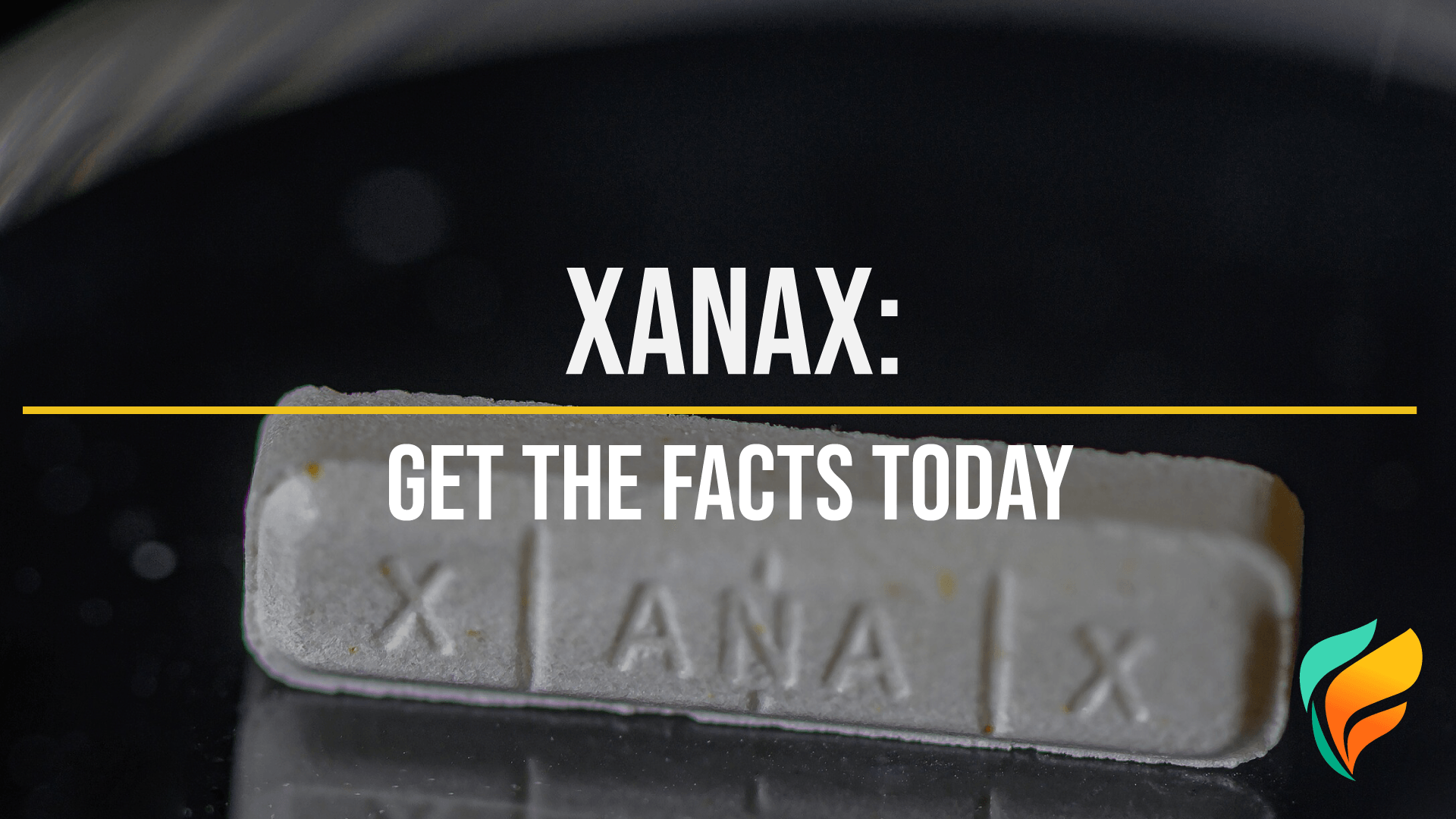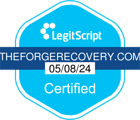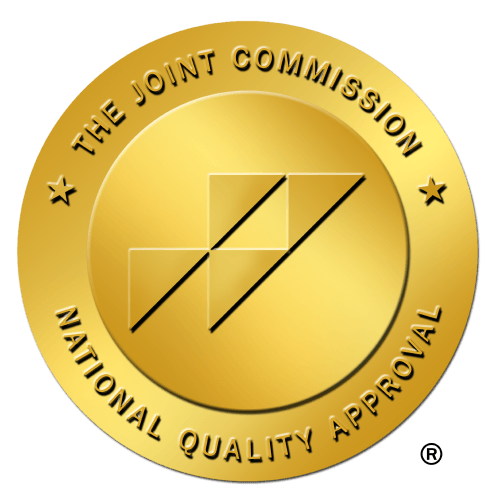Xanax: Get the Facts Today About This Popular (and Addictive) Benzo


Xanax helps many people live normal lives. But when abused? It's an addictive and sometimes deadly drug. Learn the facts about Xanax in our blog.
Xanax (alprazolam) is a commonly prescribed medication for anxiety and panic disorders. While it can provide significant relief for those struggling with these conditions, it also carries the risk of serious side effects and potential for abuse. Understanding these risks is crucial for anyone taking Xanax or concerned about a loved one.
In this article, we’ll explore the side effects of Xanax, its potential for abuse, and the treatment options available for addiction. By gaining this knowledge, you can make informed decisions and seek the necessary help to ensure the well-being of yourself or your loved ones.
What Is Xanax?
Xanax, known generically as alprazolam, is a medication commonly prescribed to treat anxiety and panic disorders. It belongs to a class of drugs called benzodiazepines, which act on the central nervous system to produce a calming effect.
By enhancing the effects of a natural chemical in your body (GABA), Xanax helps reduce the intensity of anxiety and panic attacks, providing much-needed relief for those struggling with these conditions.
Xanax is typically prescribed in tablet form, with common brand names including Niravam and Xanax XR. These forms vary in dosage and release times, offering options to best suit your medical needs.
While Xanax can be highly effective when used correctly, it's important to understand its potential side effects and risks, particularly the danger of dependency and abuse. This knowledge can help you or your loved ones use Xanax safely and recognize when to seek help.
Side Effects of Xanax
While Xanax can provide significant relief from anxiety and panic disorders, it's essential to be aware of its potential side effects. Understanding these effects can help you manage your medication more effectively and recognize when to seek medical advice.
Common Side Effects
Xanax is known to cause several common side effects, which may vary in intensity from person to person. These include:
Drowsiness: Feeling unusually sleepy or lethargic.
Dizziness: Experiencing light-headedness or a spinning sensation.
Dry Mouth: A decrease in saliva production, leading to a parched feeling.
Fatigue: Persistent tiredness or a lack of energy.
Severe Side Effects
In some cases, Xanax can lead to more severe side effects that require immediate medical attention. These include:
Memory Problems: Difficulty in recalling recent events or information.
Confusion: Experiencing disorientation or difficulty thinking clearly.
Coordination Issues: Trouble with balance or motor skills.
Slurred Speech: Difficulty speaking clearly or articulating words.
Long-Term Side Effects
Prolonged use of Xanax can lead to serious long-term side effects, such as:
Dependence and Tolerance: The body becomes reliant on the drug, often requiring higher doses to achieve the same effect.
Cognitive Impairment: Issues with concentration, memory, and other mental functions.
Mood Changes: Experiencing depression, irritability, or other mood disturbances.
Being informed about these side effects is crucial for anyone taking Xanax. If you or your loved one experiences any of these symptoms, it's important to consult with a healthcare professional to ensure safe and effective use of the medication.
Are You Struggling with Mental Health or Addiction?
We Can Help. Call Us Now!
CALL: 877-839-1772
Xanax: Potential for Abuse
Xanax, while effective for managing anxiety and panic disorder, has a high potential for abuse. Understanding why Xanax is abused and recognizing the signs can help you or your loved ones identify and address this serious issue.
Reasons for Xanax Abuse
Several factors contribute to the abuse of Xanax:
Euphoria and Calming Effects: Xanax can induce feelings of euphoria and profound relaxation, making it attractive for misuse.
Accessibility and Prescription Misuse: The widespread availability of Xanax through prescriptions increases the potential for misuse, including taking higher doses or using it recreationally.
Signs of Xanax Abuse
Recognizing the signs of Xanax abuse is crucial in preventing and addressing addiction. Key indicators include:
Taking Higher Doses Than Prescribed: Consuming more Xanax than directed by a healthcare professional.
Doctor Shopping: Visiting multiple doctors to obtain additional prescriptions for Xanax.
Using Without a Prescription: Taking Xanax without a legitimate medical need or prescription.
Statistics on Xanax Abuse
Understanding the scope of Xanax abuse can highlight its severity:
Prevalence: Xanax is one of the most commonly abused prescription drugs in the United States, with millions of prescriptions written annually.
Demographic Data: While Xanax abuse spans all age groups, it is particularly prevalent among young adults and those with a history of substance abuse.
By being aware of the potential for abuse and the signs to watch for, you can take proactive steps to safeguard yourself or your loved ones from the dangers of Xanax addiction. If you suspect abuse, seeking professional help is essential for recovery and long-term health.
Xanax Addiction
Addiction to Xanax is a serious condition that can develop even with prescribed use. Recognizing the nature of this addiction and its risk factors is vital for those affected and their loved ones.
Understanding Xanax Addiction
Xanax addiction involves both physical and psychological dependence. Physical dependence occurs when the body adapts to the drug, leading to withdrawal symptoms if use is reduced or stopped. Psychological dependence involves emotional and mental cravings, making it difficult to function without the drug.
The cycle of addiction often starts with initial use, followed by tolerance (needing more of the drug to achieve the same effect), dependence, and ultimately, addiction, where the individual feels compelled to continue using despite negative consequences.
Risk Factors for Addiction
Certain factors increase the likelihood of developing an addiction to Xanax:
Personal and Family History of Substance Abuse: A history of drug or alcohol abuse in yourself or your family can elevate the risk.
Co-occurring Mental Health Disorders: Conditions like depression, anxiety, or PTSD can lead to higher misuse rates as individuals attempt to self-medicate.
Environmental and Social Factors: Peer pressure, stress, and easy access to Xanax can contribute to the onset of addiction.
Symptoms of Xanax Addiction
Recognizing the symptoms of Xanax addiction is crucial for timely intervention:
Cravings and Compulsive Use: A strong desire to take Xanax, often leading to compulsive behaviors to obtain and use the drug.
Withdrawal Symptoms: Withdrawal symptoms from Xanax, such as anxiety, insomnia, seizures, and muscle pain, can occur when stopping or reducing intake.
Neglecting Responsibilities: Failing to meet work, school, or family obligations due to preoccupation with obtaining and using Xanax.
Understanding these aspects of Xanax addiction can help you identify the problem and seek appropriate treatment. If you or a loved one is struggling with addiction, professional help is essential for overcoming this challenging condition and achieving lasting recovery.
Are You Struggling with Mental Health or Addiction?
We Can Help. Call Us Now!
CALL: 877-839-1772
Withdrawal Symptoms and Timeline
Withdrawal from Xanax can be challenging and potentially dangerous, underscoring the importance of understanding the symptoms and timeline associated with it. Knowing what to expect can help you or your loved ones manage the process more safely and effectively.
Common Withdrawal Symptoms
Withdrawal symptoms from Xanax can vary in intensity and duration, often including:
Anxiety and Panic Attacks: Heightened feelings of anxiety and recurrent panic attacks are common during withdrawal.
Insomnia: Difficulty sleeping or staying asleep can persist, contributing to overall discomfort and fatigue.
Seizures: One of the most serious withdrawal symptoms, seizures can occur, especially with abrupt cessation of the drug.
Muscle Pain and Stiffness: Physical discomfort, including muscle aches and stiffness, is often reported.
Withdrawal Timeline
The timeline for Xanax withdrawal can be divided into three main phases:
Early Withdrawal (6-12 Hours After the Last Dose):
Symptoms begin to appear relatively quickly due to the short half-life of Xanax.
Initial signs include increased anxiety, restlessness, and irritability.
Acute Withdrawal (1-4 Days After the Last Dose):
This phase is often the most intense, with symptoms peaking during this period.
Along with heightened anxiety and insomnia, individuals may experience nausea, vomiting, sweating, and in severe cases, seizures.
Protracted Withdrawal (Weeks to Months):
While the most intense symptoms typically subside, some individuals may continue to experience prolonged withdrawal effects.
These can include persistent anxiety, mood swings, and intermittent sleep disturbances.
Understanding this timeline is crucial for preparing for and managing withdrawal. It is highly recommended to undergo withdrawal under medical supervision to ensure safety and address any complications that arise. Professional support can significantly enhance the success of the withdrawal process and pave the way for a successful recovery.
Xanax Addiction Treatment Options
Overcoming Xanax addiction is a challenging but achievable goal with the right support and treatment. Understanding the available treatment options can help you or your loved one take the first step toward recovery.
Medical Detoxification
Importance of Supervised Detox: Medical detox is often the first step in treating Xanax addiction, providing a safe environment to manage withdrawal symptoms under professional supervision.
Medications Used in Detox: Doctors may prescribe medications to ease withdrawal symptoms and prevent complications, such as anti-anxiety drugs or anticonvulsants to manage seizures.
Inpatient Rehabilitation
Structured Environment and Intensive Therapy: Inpatient rehab offers a highly structured setting where individuals receive 24/7 care and support. This environment is crucial for those with severe addictions or co-occurring disorders.
Duration and Types of Programs: Programs typically range from 30 to 90 days, though longer stays may be necessary. Treatment includes individual and group therapy, medical care, and holistic approaches like yoga or meditation.
Outpatient Rehabilitation
Flexibility and Less Intensive Treatment: Outpatient rehab allows individuals to live at home while attending treatment sessions during the day or evening. This option is suitable for those with less severe addictions or strong support systems at home.
Types of Outpatient Programs: Outpatient options include partial hospitalization programs (PHP), intensive outpatient programs (IOP), and standard outpatient therapy. Each offers varying levels of intensity and support.
Behavioral Therapies
Cognitive Behavioral Therapy (CBT): CBT helps individuals identify and change negative thought patterns and behaviors related to their addiction. It also teaches coping strategies for managing stress and triggers.
Dialectical Behavior Therapy (DBT): DBT focuses on teaching skills to manage emotions, improve relationships, and handle stress without resorting to substance use.
Motivational Interviewing (MI): MI helps individuals find the internal motivation to change their behavior and commit to their recovery goals.
Support Groups and Aftercare
12-Step Programs: Programs like Narcotics Anonymous (NA) provide a supportive community where individuals can share experiences and support each other in recovery.
Continued Counseling and Therapy: Ongoing therapy sessions help maintain progress, address any lingering issues, and provide continued support.
Building a Support Network: Establishing a strong support network of family, friends, and fellow recovery peers is essential for long-term sobriety and resilience.
Choosing the right treatment option is a critical step toward overcoming Xanax addiction. With professional help and a supportive environment, you or your loved one can achieve recovery and lead a healthier, more fulfilling life.
Are You Struggling with Mental Health or Addiction?
We Can Help. Call Us Now!
CALL: 877-839-1772
Xanax Addiction Is a Serious Problem. We’ll Help You Out of It
Understanding the side effects and potential for abuse of Xanax is crucial for safeguarding your health or that of a loved one. Recognizing the signs of addiction and knowing the available treatment options can pave the way to recovery.
At The Forge Recovery Center, we are committed to helping individuals overcome Xanax addiction through comprehensive and compassionate care. If you or someone you know is struggling with Xanax addiction, reach out to us for the support and treatment needed to reclaim a healthy, fulfilling life.
Are You Struggling with Mental Health or Addiction?
We Can Help. Call Us Now!
CALL: 877-839-1772




